Engineering Mechanics - KOP: Impulse and Momentum
Why should I learn to solve Engineering Mechanics questions and answers section on "KOP: Impulse and Momentum"?
Learn and practise solving Engineering Mechanics questions and answers section on "KOP: Impulse and Momentum" to enhance your skills so that you can clear interviews, competitive examinations, and various entrance tests (CAT, GATE, GRE, MAT, bank exams, railway exams, etc.) with full confidence.
Where can I get the Engineering Mechanics questions and answers section on "KOP: Impulse and Momentum"?
IndiaBIX provides you with numerous Engineering Mechanics questions and answers based on "KOP: Impulse and Momentum" along with fully solved examples and detailed explanations that will be easy to understand.
Where can I get the Engineering Mechanics section on "KOP: Impulse and Momentum" MCQ-type interview questions and answers (objective type, multiple choice)?
Here you can find multiple-choice Engineering Mechanics questions and answers based on "KOP: Impulse and Momentum" for your placement interviews and competitive exams. Objective-type and true-or-false-type questions are given too.
How do I download the Engineering Mechanics questions and answers section on "KOP: Impulse and Momentum" in PDF format?
You can download the Engineering Mechanics quiz questions and answers section on "KOP: Impulse and Momentum" as PDF files or eBooks.
How do I solve Engineering Mechanics quiz problems based on "KOP: Impulse and Momentum"?
You can easily solve Engineering Mechanics quiz problems based on "KOP: Impulse and Momentum" by practising the given exercises, including shortcuts and tricks.
- KOP: Impulse and Momentum - General Questions
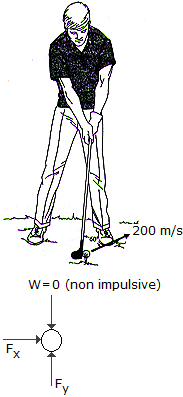
A golf ball having a mass of 40 g is struck such that it has an initial velocity of 200 m/s as shown. Determine the horizontal and vertical components of the impulse given to the ball.
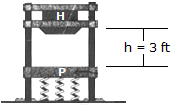
The drop hammer H has a weight of 900 lb and falls from rest. H has a weight of 900 lb and falls from rest h = 3 ft onto a forged anvil plate P that has a weight of 500 lb. The plate is mounted on a set of springs which have a combined stiffness of kT = 500 lb/ft. Determine (a) the velocity of P and H just after collision and (b) the maximum compression in the springs caused by the impact. The coefficient of restitution between the hammer and the plate is e = 0.6. Neglect friction along the vertical guide posts A and B.
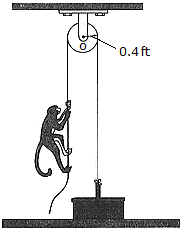
A basket and its contents weigh 10 lb. A 20-lb monkey grabs the other end of the rope and very quickly (almost instantaneously) accelerates by pulling hard on the rope until he is moving with a constant speed of vm/r = 2 ft/s measured relative to the rope. The monkey then continues climbing at this constant rate relative to the rope for 3 seconds. How fast is the basket rising at the end of the 3 seconds? Neglect the mass of the pulley and the rope.
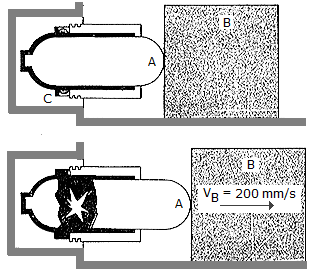
In cases of emergency, the gas actuator can be used to move a 75-kg block B by exploding a charge C near a pressurized cylinder of negligible mass. As a result of the explosion, the cylinder fractures and the released gas forces the front part ofthe cylinder, A, to move B and the floor is  = 0.5, determine the impulse that the actuator must impart to B.
= 0.5, determine the impulse that the actuator must impart to B.
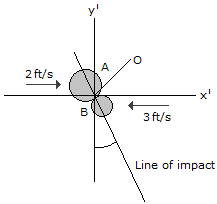
Two coins A and B have the initial velocities shown just before they collide at point O. If they have weights of WA = 13.2(10-3) lb and WB = 6.6(10-3) lb and the surface upon which they slide is smooth, determine their speed just after impact. The coefficient of restitution is e = 0.65.